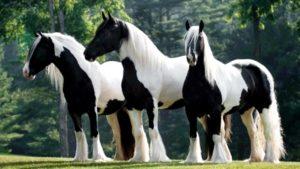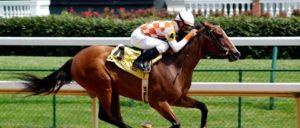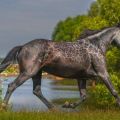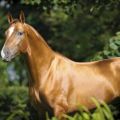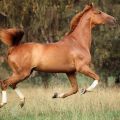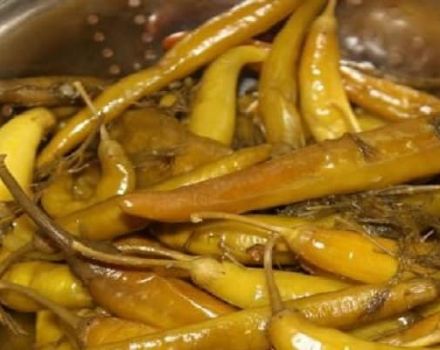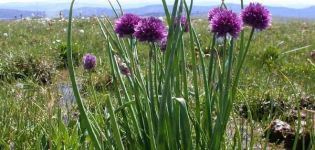Differences between ponies and ordinary horses, their varieties and rules of keeping
A pony horse means a decorative animal for teaching children to ride, participating in circus performances. But this is not entirely true. A miniature subspecies of the domestic horse has survived wild on Sable Island, off the coast of Nova Scotia. Ponies are used by farmers for agricultural work, and before they worked in mines, without rising to the surface for years.
How ponies came to be
Share ponies that evolved naturally and artificially bred by humans. The first ones formed on island territories with a harsh climate and sparse vegetation - in Scandinavia, on the British Islands, Hokkaido, Sicily. Earlier than others, shaggy, unpretentious horses appeared in the south of France, in the current Camargue reserve, where the ancient ancestors of horses lived.
With miniature parameters, thick hair with undercoat, it is easier for animals to protect themselves from cold, piercing winds. Small growth, strong legs simplified grazing, digging up roots with a meager food base.
Artificially bred 20 varieties of ponies. Among them are riding breeds, taking part in races, light-harness, companion animals.
What is the difference between a horse and a pony
Features of a pony - short stature (height at the withers 80-150 cm), massive neck, lush mane and tail, thick wool. Despite their small size, they have a strong athletic build, muscular legs, strong hooves. In Russia, animals no higher than 110 cm are considered ponaidh (small horses), and the International Equestrian Federation classifies horses up to 1.5 m high as ponies.If domestic horses live 25-30 years, the life expectancy of a pony with proper care is 30-50 years old.

Differences in behavior:
- Ponies, like dogs, are attached to the owner. To stay calm, animals must communicate with a person several times a day, live near the house.
- Miniature horses are smart, savvy and easy to train, absorbing both positive and negative skills.
- The horse should not be pampered. To prevent a pet from becoming an uncontrollable animal capable of throwing a child off the back, strict education is required.
- Undersized horses are friendly not only to people, but also to representatives of their breed, pets. Partitions are not required for keeping, they get along in a common stall.
Ponies that survived in adverse conditions of the natural environment are hardy, hardworking, and have excellent health. The only inconvenience in their maintenance is the difficulty in acquiring harness. Standard equipment does not fit, you have to make an individual order.

Varieties
Most common pony breeds:
- Shetland.A variety of heavy trucks with a height of 70-110 cm, weighing up to 200 kg, is named after its place of origin - the Shetland Archipelago, located at the junction of the Atlantic and the North Sea. Reliable animals of piebald, black or bay color are muscular, if necessary, they show courage and ingenuity. Their endurance, their ability to carry loads up to 40% of their own weight, is surprising. Among Shetland horses there are many circus performers, blind guides.
- Welsh. A variety of ponies, originally from North Wales, formed in the 15th century BC. Differs in a variety of colors and division into 4 types after crossing with Arabian horses. Representatives of type A - up to 120 cm tall, are suitable for children to ride. Type B horses grow up to 137 cm and participate in races along with other breeds. Type C ponies, mixed with Arabic blood, 122-137 cm tall - used for riding, in a team. Type D, from 137 cm high, is versatile.
- Falabella. The artificially bred breed retained the proportions of a tall riding horse. Dwarf animals with a height of 45-75 cm weigh no more than 60 kg, they have no practical value, they are used as a companion animal. Smart, quick learners, friendly with children and adults.
- Icelandic. In Iceland, bay, black ponies came from Norway through the Vikings. Animals reach a height of 137 cm. Representatives of this unique species, which can move with a gait, are characterized by a wide neck and a large head. The Icelanders, protecting the purity of the breed, banned the import of other horses into the country.
Hardy Scottish ponies look like Asian wild horses. Interesting is the English horse variety, bred for teaching children to ride and outwardly resembling Arabian miniature horses. The smallest horse is Einstein, a representative of the Polo breed. The foal was born weighing less than 3 kg, with a height of 0.36 m.
What is important to know when caring for a pony
Maintaining the health of miniature horses requires attention and care. In summer, the animals graze all day on designated pastures. In winter, they feed on hay, vitamin and mineral supplements. Small horses tend to overeat, so the feed is dosed, divided into 2 parts, and the nursery is filled in the morning and evening. If you want to pamper your pet, treat them with apples, carrots, beets. The stable is regularly cleaned, fresh water is offered at least three times a day. If the grazing soil is not rocky, hooves are trimmed as needed to prevent the leg joints from bending.
